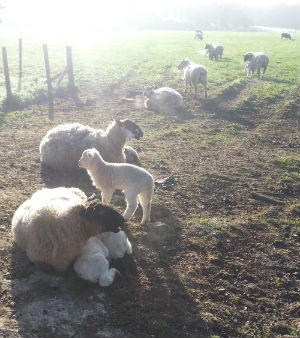Nematodirus Warning as England, Wales and SE Scotland go red
SCOPS warns that 2014 looks set to be an early season for Nematodirus battus in the UK. Calculations by Bristol University based on soil temperatures recorded through March, suggest that it will be 3 - 4 weeks earlier than in 2013. This is good news for later lambing flocks because the main threat will be over before their lambs are old enough to be at risk. However, many February and March born lambs will be at risk and action may be required to avoid losses.

Sheep farmers must be on their guard against Nematodirus now that the weather has warmed up, warns SCOPS. Such a sudden change from cold days and frosty nights is when Nematodirus is at its most dangerous with a mass hatch of over-wintered parasites forecast. Farmers are urged to consider the risk factors below, consult their
vet or adviser with regard to local risks and treat lambs that are at risk.The Disease
Nematodirosis is a particularly nasty disease in lambs, causing a high number of mortalities and stunting the growth of many others. It is caused by the worm, Nematodirus battus, which has a different life-cycle to other sheep worms. Under certain climatic conditions it can strike very quickly, with little or no warning.The main difference in the life-cycle of Nematodirus battus compared with other parasitic worms, is that development to infective larvae takes place within the egg and infection passes from one lamb crop to the next year's crop. Cold weather delays hatching, so when we get a sudden change in temperature, as we have this year, it can trigger a mass hatch. If this coincides with the time when lambs are starting to take in significant amounts of grass (over about 6 weeks old), the result can be devastating.
- 23rd April 2014

